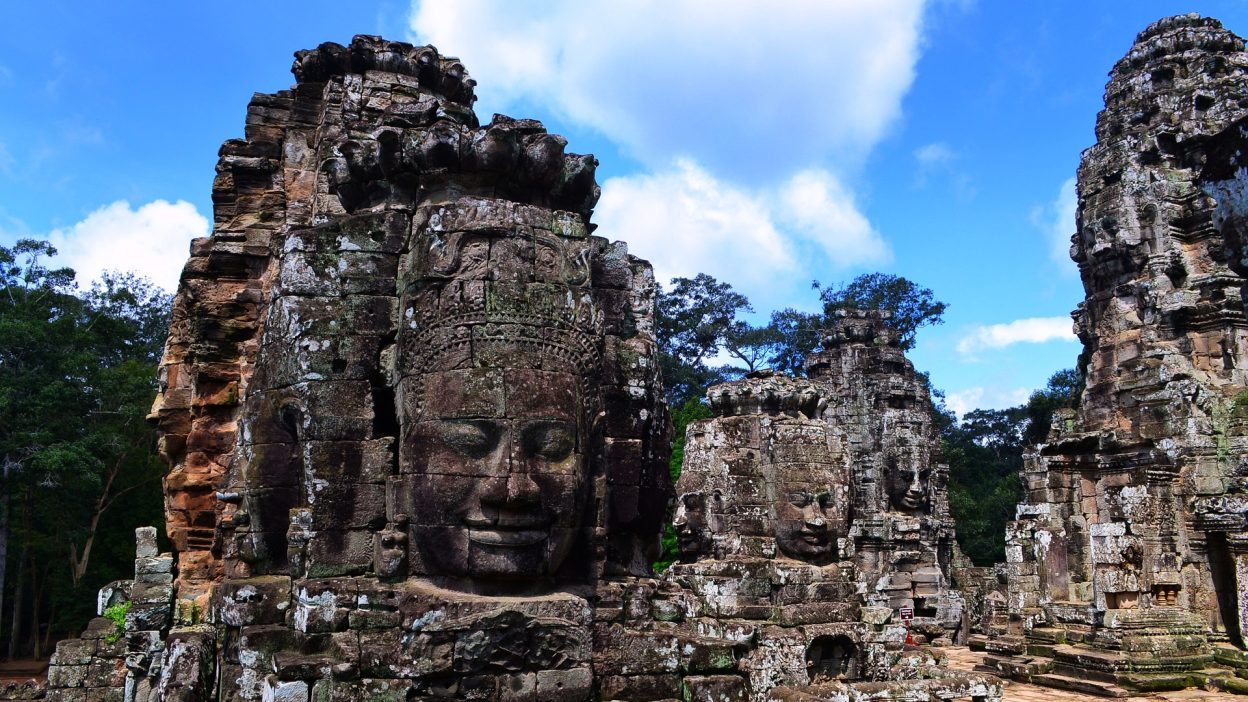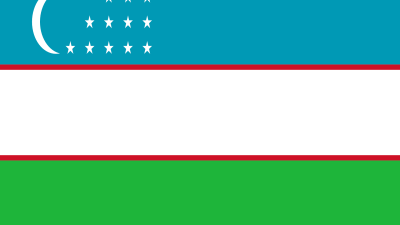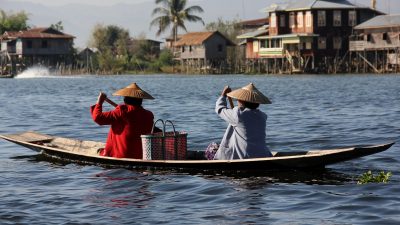A Haunting Legacy of Humanity’s Darkest Chapter
The Cambodian Genocide: An In-Depth Examination
1. Introduction to the Cambodian Genocide
The Cambodian Genocide is one of the most chilling reminders of humanity’s capacity for cruelty, marking a dark chapter in history from 1975 to 1979. Orchestrated by the radical communist regime known as the Khmer Rouge and their notorious leader, Pol Pot, this atrocity resulted in the deaths of an estimated 1.7 to 2 million people, representing nearly 25% of Cambodia’s population. The regime’s unrelenting pursuit of an agrarian utopia dismantled society’s very fabric, targeting intellectuals, ethnic minorities, and even children. In less than four years, Cambodia was transformed into a landscape of mass graves, forced labour camps, and relentless persecution, leaving the world to grapple with the consequences of unchecked power and ideological extremism.
The genocide was not just about numbers—it was about the systematic obliteration of a nation’s identity and humanity. The Khmer Rouge, fuelled by an extremist interpretation of Marxist-Leninist ideology, sought to erase modernity by forcing millions into the countryside to work as farmers under appalling conditions. Cities such as Phnom Penh were emptied overnight, with residents marched to rural labour camps. Intellectuals, professionals, and those perceived as enemies of the revolution were brutally executed. Even trivial characteristics, such as wearing glasses, were seen as evidence of being an intellectual and could result in immediate death. The regime’s disdain for religion, ethnicity, and education led to the decimation of the Cham Muslims, Vietnamese, and other minority groups, further amplifying the genocide’s devastating impact.
This tragedy matters today because it highlights the catastrophic consequences of authoritarian regimes and international indifference. The Cambodian Genocide was allowed to unfold while much of the world turned a blind eye, with Cold War politics taking precedence over human rights. It stands as a grim reminder of the importance of vigilance in preventing such atrocities. The genocide also left scars that still run deep in Cambodian society—psychological trauma, lost generations, and a cultural heritage nearly erased. By understanding the events of 1975 to 1979, the global community can strive to prevent similar tragedies and honour the memory of those who suffered and perished under the Khmer Rouge’s oppressive rule.
2. Rise of the Khmer Rouge: Seeds of Destruction
The rise of the Khmer Rouge was the culmination of years of political chaos and societal disintegration in Cambodia, creating a fertile ground for one of history’s most ruthless regimes. The nation’s instability began in the 1960s, during the reign of Prince Norodom Sihanouk, when Cambodia became embroiled in the Cold War. The prince’s attempts to maintain neutrality proved futile as neighbouring Vietnam became the epicentre of a raging war. In 1970, a coup orchestrated by General Lon Nol ousted Sihanouk, plunging Cambodia into civil war. This coup, supported by the United States, destabilised the nation further, intensifying internal divisions and opening the door for the Communist Party of Kampuchea (later known as the Khmer Rouge) to gain influence.
At the heart of the Khmer Rouge was Pol Pot, a man whose name has become synonymous with cruelty and oppression. Born Saloth Sâr in 1925, Pol Pot was deeply influenced by Marxist-Leninist ideology during his studies in Paris. Upon returning to Cambodia, he led the Communist Party of Kampuchea, envisioning an agrarian society purged of modernity and Western influence. Pol Pot’s vision was deceptively simple yet brutally radical: eliminate class distinctions and create a “pure” peasant-based economy. However, his revolutionary rhetoric masked the unimaginable violence his regime would unleash. By capitalising on rural discontent and framing the urban elite as enemies of the people, the Khmer Rouge gained support among the rural poor, who were disillusioned by decades of inequality.
The Khmer Rouge’s rise to power culminated on 17 April 1975, when they captured the capital, Phnom Penh. This marked the beginning of a reign of terror that would claim the lives of millions. The Khmer Rouge’s immediate actions set the tone for the horrors to come: the forced evacuation of cities, including Phnom Penh, resulted in the mass displacement of 2 million people. Families were torn apart, and urban dwellers were marched to labour camps under inhumane conditions. With this single event, the Khmer Rouge erased modern Cambodia and laid the groundwork for their genocidal regime. This dark ascent is a chilling reminder of how political instability, economic inequality, and unchecked ideologies can converge to create a humanitarian catastrophe of unprecedented scale.
4. The Ideology Behind the Genocide
The Khmer Rouge’s ideology revolved around creating a “pure” and classless society through radical and violent measures. Their policies were rooted in Marxist-Leninist thought but twisted into an extreme version that demanded the eradication of modern influences and intellectualism.
The regime particularly targeted Cambodia’s educated classes, whom they considered threats to their revolution. Teachers, doctors, engineers, and even individuals wearing glasses were systematically executed. Ethnic minorities, including the Cham Muslims, Vietnamese, and Chinese Cambodians, were also targeted as part of an effort to achieve ethnic homogeneity.
Religious institutions were dismantled, with Buddhist monks and clergy members among the regime’s victims. The Khmer Rouge sought to erase Cambodia’s cultural and spiritual identity, leaving behind a society stripped of individuality and history. Their ideology was not just about control but the complete remodelling of human existence.
5. S-21: A Prison of Unimaginable Horror
- A Site of Systematic Torture: S-21, once a school, was transformed into a prison and interrogation centre under the Khmer Rouge. Renamed Tuol Sleng, it became infamous for its brutal operations. Over 20,000 individuals were imprisoned here, with only a few surviving the ordeal.
- Brutality Beyond Comprehension: Prisoners at S-21 were subjected to relentless torture, including beatings, electrocution, and starvation. The regime sought forced confessions to fabricated crimes. Even children and infants were not spared from the horrors.
- Haunting Records: Of the 20,000 prisoners, fewer than 12 lived to tell the tale. The Khmer Rouge documented each victim through photographs and written records, a grim testament to the systematic nature of their crimes.
6. The Killing Fields: Cambodia’s Haunting Graves of Horror
The Killing Fields stand as some of the most harrowing reminders of the Khmer Rouge’s reign of terror. These mass grave sites, scattered across Cambodia, are where the regime carried out the systematic execution of its victims. One of the most infamous sites, Choeung Ek, lies just outside Phnom Penh and is now a memorial to the atrocities committed. Between 1975 and 1979, it is estimated that 1.7 to 2 million people—nearly 25% of Cambodia’s population—were brutally murdered under Pol Pot’s orders. These fields were not mere sites of death; they became places of unimaginable cruelty, where the Khmer Rouge’s barbarity reached its zenith.
The methods of execution used in the Killing Fields were horrifying in their savagery. To conserve ammunition, victims were often bludgeoned to death with farming tools, hammers, or machetes. Even more disturbingly, infants and young children were killed by being smashed against trees, their cries silenced in acts of unimaginable inhumanity. The regime’s soldiers were ordered to kill without hesitation, ensuring that no one, not even the most vulnerable, survived. At Choeung Ek, over 8,000 skulls have been uncovered, many bearing the marks of brutal violence. These mass graves, often shallow pits, now stand as silent witnesses to the genocide’s scale and the suffering endured by its victims.
For survivors, the Killing Fields represent an enduring psychological and emotional trauma. Families were torn apart, with loved ones disappearing without a trace, only to be found in these mass graves years later. The horrors inflicted have left scars that transcend generations, with many Cambodians still grappling with the loss of entire communities. Today, the Killing Fields serve as solemn memorials, a stark reminder of the depths of human cruelty. The preservation of sites like Choeung Ek is essential in ensuring that the memory of these atrocities endures, both as a tribute to those who perished and as a warning against the dangers of unchecked extremism. These fields are not just places of mourning but also symbols of resilience, where the living honour the dead by telling their stories to the world.
8. The Fall of the Khmer Rouge: A Bitter Liberation
The Khmer Rouge’s reign began to crumble in 1978, following incursions by Vietnamese forces. By 7 January 1979, Vietnamese troops seized Phnom Penh, effectively ending Pol Pot’s regime. However, the aftermath of their rule was far from simple.
While the fall of the Khmer Rouge brought relief, it also ushered in a period of chaos. Remnants of the Khmer Rouge retreated into rural strongholds, prolonging conflict. Meanwhile, Cold War dynamics saw some Western nations continue to recognise the Khmer Rouge as Cambodia’s legitimate government.
Cambodians faced immense challenges in rebuilding their lives. The destruction of infrastructure and the loss of skilled professionals meant that recovery was a slow and arduous process. The psychological trauma inflicted by the genocide added another layer of difficulty to national healing.
9. Justice Delayed: The Trials of Khmer Rouge Leaders
Efforts to bring justice to the victims of the Cambodian Genocide were significantly delayed. The establishment of the Extraordinary Chambers in the Courts of Cambodia (ECCC) in 2003 marked a significant step forward, but the tribunal faced numerous obstacles, including limited funding and political interference.
Notable trials included those of Nuon Chea and Khieu Samphan, both of whom were sentenced to life imprisonment for crimes against humanity. Pol Pot himself evaded justice, dying in 1998 under mysterious circumstances.
Despite these efforts, justice for many victims remains elusive. The tribunal’s narrow focus and the late timing of the trials have drawn widespread criticism. Many perpetrators of the genocide were never held accountable, leaving survivors without closure.
10. The Genocide’s Lasting Impact on Cambodian Society
The Cambodian Genocide left deep and enduring scars on the country’s social fabric. With nearly 2 million people killed, the loss of life created a demographic vacuum, disrupting families and communities. Survivors continue to grapple with trauma that spans generations.
The genocide also caused catastrophic damage to Cambodia’s infrastructure. Schools, hospitals, and cultural landmarks were destroyed, setting the nation back decades. Economic recovery has been slow, hindered by political corruption and instability.
Non-governmental organisations (NGOs) have played a crucial role in addressing these challenges. Their efforts to provide psychological support, document survivors’ stories, and educate future generations have been vital in helping Cambodia move forward.
11. The Role of Media in Unveiling the Truth
The media played an indispensable role in uncovering the realities of the Cambodian Genocide. Journalists like Sydney Schanberg and Dith Pran courageously documented the Khmer Rouge’s atrocities, risking their lives in the process. Their accounts were instrumental in bringing international attention to the crisis.
Visual evidence, including photographs and survivor testimonies, provided irrefutable proof of the genocide. Films like The Killing Fields and documentaries have since kept the memory of the tragedy alive, ensuring that it is neither forgotten nor denied.
12. Lessons Learned and Global Implications
The Cambodian Genocide remains one of the darkest chapters in human history, exposing the catastrophic consequences of authoritarian regimes and radical ideologies. Between 1975 and 1979, the Khmer Rouge, led by Pol Pot, orchestrated the deaths of an estimated 1.7 to 2 million people, nearly a quarter of Cambodia’s population. The genocide demonstrates the horrifying impact of unchecked power, where an extremist vision to create an agrarian utopia led to mass killings, forced labour, and cultural annihilation. The lessons from Cambodia echo a stark warning: when power is concentrated in the hands of a few and dissent is silenced, the potential for widespread atrocities becomes inevitable.
The Cambodian tragedy is not an isolated event; it shares disturbing parallels with other genocides throughout history. For instance, the Rwandan Genocide in 1994 saw the extermination of over 800,000 Tutsi in a matter of 100 days, fuelled by ethnic hatred and a failure of international intervention. Similarly, the Holocaust during World War II resulted in the systematic murder of 6 million Jews under Adolf Hitler’s Nazi regime. These genocides, like Cambodia’s, were driven by dehumanisation, propaganda, and the deliberate targeting of specific groups. A common thread running through these tragedies is the role of indifference and inaction by the international community, which often responded too late or not at all, enabling the atrocities to escalate unchecked.
The Cambodian Genocide underscores the urgent need for global accountability and intervention to prevent such crimes against humanity. Institutions like the United Nations and mechanisms like the Responsibility to Protect (R2P) framework highlight the moral and political obligation of nations to act decisively when faced with early signs of genocide. The failure to intervene in Cambodia reflects a painful lesson: prevention is far more effective than reaction. International cooperation, robust human rights frameworks, and holding perpetrators accountable—such as through tribunals like the Extraordinary Chambers in the Courts of Cambodia (ECCC)—are essential steps to ensure history does not repeat itself. The global implications of the Cambodian Genocide resonate powerfully today, urging humanity to remain vigilant against tyranny and to uphold justice and human dignity for all.
13. Remembering the Victims: Cambodia’s Memorials
Commemorating the victims of the genocide is crucial for preserving their memory and educating future generations. Sites such as the Choeung Ek Killing Fields and the Tuol Sleng Museum stand as powerful reminders of the horrors that occurred.
Educational initiatives within Cambodia and abroad play a vital role in keeping the memory of the genocide alive. Survivors’ testimonies, films, and cultural preservation efforts ensure that the world does not forget the devastating consequences of hatred and extremism.
14. Frequently Asked Questions (FAQs)
What triggered the Cambodian Genocide?
The genocide stemmed from the Khmer Rouge’s radical ideology to establish an agrarian utopia, targeting intellectuals and minority groups.
Who were the primary victims of the Khmer Rouge?
The regime targeted intellectuals, ethnic minorities such as Cham Muslims and Vietnamese, religious groups, and perceived political opponents.
How many lives were lost during the genocide?
An estimated 1.7 to 2 million people died, amounting to nearly 25% of Cambodia’s population at the time.
Was Pol Pot ever held accountable?
No, Pol Pot died in 1998 before he could face trial for his role in the genocide.
Why are the Killing Fields significant?
The Killing Fields are mass graves where victims of the genocide were executed, serving as memorials to honour the dead and educate about the atrocities.
References:
“Khmer Rouge and the Cambodian Genocide”
“S-21 Prison (Tuol Sleng Genocide Museum)”
“Pol Pot and the Khmer Rouge”
Cambodian genocide
Genocide in Cambodia
Cambodia 1975–1979
YT Links
Ugly History: The Khmer Rouge murders – Timothy Williams
The Khmer Rouge and the Cambodian Genocide
The Lost World Of The Khmer Rouge: Pol Pot’s Cambodian Genocide | Timeline
World’s Most Murderous Dictator Pol Pot




